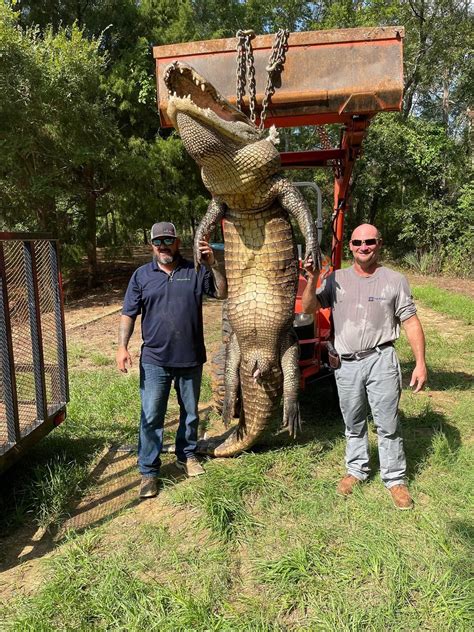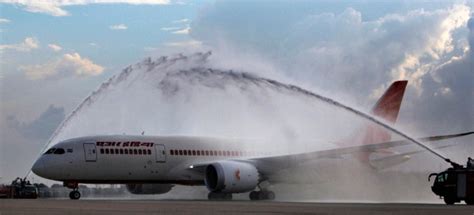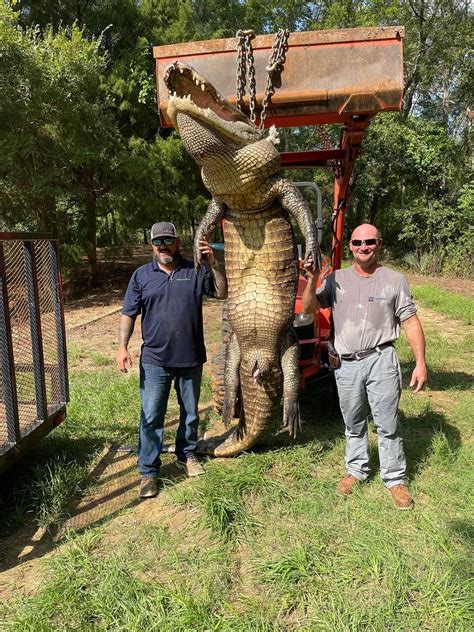
A Spring restaurant in Humble, Texas, experienced an unusual visitor on Sunday morning when a nine-foot alligator strolled onto its patio, startling staff and prompting a call to local authorities. The alligator, estimated to weigh between 300 and 400 pounds, was safely captured and relocated by licensed trappers.
A massive alligator surprised staff at a Texas restaurant early Sunday morning, ambling onto the patio of the building. The Spring, Texas establishment, located in the 6700 block of FM 1960 in Humble, was gearing up for its usual Sunday service when the unexpected guest arrived, causing quite a stir before the restaurant even opened its doors to the public. The incident, which unfolded around 9:45 a.m., was promptly reported to local authorities, who dispatched licensed alligator trappers to the scene.
According to Harris County Constable Precinct 4, the alligator measured an impressive nine feet in length and was estimated to weigh between 300 and 400 pounds. The reptile’s presence on the restaurant’s patio prompted immediate safety concerns, leading to swift action to ensure the safety of both the public and the animal. Deputies from Constable Mark Herman’s Office responded to the scene, working alongside the trappers to secure the area and manage the situation effectively.
“Deputies with Constable Mark Herman’s Office responded to a restaurant in the 6700 block of FM 1960 in Humble, in reference to a large alligator on the property,” Constable Herman’s office stated in a social media post. “Upon deputies arriving, they observed a large alligator on the patio. Licensed trappers arrived on scene, and the alligator was safely captured and removed.” The quick response and coordinated effort ensured that the alligator was removed without incident, preventing any potential harm to people or damage to property.
While the appearance of an alligator in such a public setting might seem unusual, experts say that such occurrences are not entirely uncommon in areas where alligator habitats intersect with human development. As urban sprawl continues to encroach upon natural habitats, encounters between humans and wildlife, including alligators, are becoming increasingly frequent.
Alligators are native to Texas and can be found in various aquatic environments throughout the state, including swamps, marshes, rivers, and lakes. The alligator population in Texas is estimated to be substantial, and the animals play an important role in maintaining the ecological balance of their habitats. However, their presence in populated areas can pose challenges, requiring careful management and public awareness to minimize conflicts and ensure the safety of both humans and alligators.
The incident at the Spring restaurant serves as a reminder of the importance of respecting wildlife and taking appropriate precautions when living or working in areas where alligators are known to inhabit. Authorities advise residents and business owners to be aware of their surroundings, especially near bodies of water, and to report any sightings of alligators in unusual locations to the appropriate authorities.
The Texas Parks and Wildlife Department (TPWD) provides valuable information and resources on alligator safety and management, including guidelines on how to avoid conflicts with alligators and what to do if you encounter one. According to the TPWD, it is crucial to never feed alligators, as this can cause them to lose their natural fear of humans and become more likely to approach populated areas. Additionally, it is important to keep a safe distance from alligators and to supervise children and pets when they are near water.
The successful capture and relocation of the alligator from the Spring restaurant is a testament to the effectiveness of the state’s alligator management program and the dedication of local authorities and licensed trappers. By working together, these professionals are able to protect both the public and the alligators, ensuring that these fascinating creatures can continue to thrive in their natural habitats while minimizing the risk of conflicts with humans. The alligator was relocated to a more suitable habitat, away from populated areas, where it can live without posing a threat to public safety. The incident serves as a valuable learning experience for the community, highlighting the importance of coexisting with wildlife and respecting their space.
The presence of alligators in Texas is a testament to the state’s rich biodiversity, but it also requires a responsible approach to managing their populations and mitigating potential risks. As Texas continues to grow and develop, it is essential to find ways to balance human needs with the conservation of wildlife habitats, ensuring that both humans and animals can thrive in the Lone Star State.
This incident also sheds light on the role of local authorities and wildlife management agencies in addressing human-wildlife conflicts. The quick response of the Harris County Constable Precinct 4 and the expertise of the licensed trappers were instrumental in resolving the situation safely and efficiently. Their efforts underscore the importance of having well-trained and equipped professionals who can respond to such incidents and protect the public while ensuring the humane treatment of animals.
In conclusion, the unexpected appearance of a nine-foot alligator at a Spring restaurant in Humble, Texas, serves as a reminder of the presence of wildlife in urban areas and the importance of taking precautions to avoid conflicts. The successful capture and relocation of the alligator is a testament to the effectiveness of the state’s alligator management program and the dedication of local authorities and licensed trappers. By being aware of our surroundings, respecting wildlife, and reporting any sightings of alligators in unusual locations, we can help ensure the safety of both humans and these fascinating creatures.
Detailed Context and Analysis:
The incident at the Spring restaurant, while seemingly isolated, is indicative of a broader trend of increasing human-wildlife interactions in Texas and other states experiencing rapid urbanization. As cities and suburbs expand, they often encroach upon natural habitats, leading to more frequent encounters between humans and animals like alligators, coyotes, deer, and even bears. This necessitates a comprehensive approach to wildlife management that includes public education, habitat preservation, and conflict resolution strategies.
Alligator Biology and Behavior:
American alligators (Alligator mississippiensis) are apex predators native to the southeastern United States, including Texas. They are typically found in freshwater environments such as swamps, marshes, rivers, and lakes. Alligators are opportunistic feeders, preying on a variety of animals, including fish, birds, turtles, snakes, and mammals. While they are generally not aggressive towards humans, they can become dangerous if they feel threatened or if they have been habituated to human food.
Alligators are ectothermic, meaning they rely on external sources of heat to regulate their body temperature. This is why they are often seen basking in the sun, especially during cooler months. During the winter, alligators may enter a state of dormancy called brumation, where they become less active and their metabolism slows down.
Alligators play an important role in maintaining the ecological balance of their habitats. They help control populations of other animals and create habitat for other species by digging gator holes, which provide refuge for fish and other aquatic animals during droughts.
Alligator Management in Texas:
The Texas Parks and Wildlife Department (TPWD) is responsible for managing alligator populations in the state. The TPWD conducts surveys to monitor alligator populations and implements regulations to ensure their sustainable management. Alligator hunting is permitted in Texas, but it is subject to strict regulations, including bag limits, season dates, and tagging requirements.
The TPWD also provides guidance to the public on how to avoid conflicts with alligators. The agency recommends never feeding alligators, keeping a safe distance from them, and supervising children and pets when they are near water. If an alligator is deemed to be a nuisance or a threat to public safety, the TPWD may authorize its removal by licensed trappers.
Human-Wildlife Conflict Mitigation:
The incident at the Spring restaurant highlights the importance of proactive measures to mitigate human-wildlife conflicts. These measures can include:
- Habitat Preservation: Protecting and restoring natural habitats can help reduce the likelihood of animals entering urban areas.
- Public Education: Educating the public about wildlife behavior and how to avoid conflicts can help prevent incidents from occurring.
- Responsible Development: Planning development in a way that minimizes encroachment on wildlife habitats can help reduce human-wildlife interactions.
- Nuisance Animal Control: Implementing programs to remove or relocate nuisance animals can help address conflicts when they do occur.
- Fencing and Barriers: Installing fences or other barriers around sensitive areas can help keep animals out.
Community Impact and Response:
The appearance of the alligator at the Spring restaurant likely caused a significant stir in the local community. Residents and business owners may have been alarmed by the incident, and it may have raised concerns about the safety of their families and pets. However, the swift and professional response of the authorities and the licensed trappers helped to reassure the community that the situation was under control.
The incident also provided an opportunity for the community to learn more about alligators and the importance of coexisting with wildlife. Local news outlets and social media platforms helped to disseminate information about alligator safety and management, and the TPWD’s website provides a wealth of resources for those who want to learn more.
The Broader Implications:
The incident at the Spring restaurant is just one example of the increasing challenges of managing wildlife in urban areas. As human populations continue to grow and urban areas expand, it is essential to find ways to balance human needs with the conservation of wildlife. This requires a collaborative approach involving government agencies, conservation organizations, private landowners, and the public.
By working together, we can ensure that both humans and wildlife can thrive in our communities. This means protecting natural habitats, educating the public about wildlife, and implementing responsible development practices. It also means being prepared to respond to human-wildlife conflicts in a safe and humane manner.
The incident at the Spring restaurant serves as a valuable reminder of the importance of these efforts. By learning from this experience and taking proactive steps to mitigate human-wildlife conflicts, we can create a more sustainable and harmonious future for both humans and animals.
The Role of Social Media:
Social media played a significant role in disseminating information about the alligator incident. The Harris County Constable Precinct 4 posted about the incident on their social media accounts, providing updates to the public and reassuring them that the situation was being handled. Local news outlets also used social media to share the story, reaching a wide audience and generating considerable interest.
Social media can be a powerful tool for informing the public about wildlife issues and promoting responsible behavior. However, it is also important to be aware of the potential for misinformation and sensationalism. It is crucial to rely on credible sources of information, such as government agencies and conservation organizations, when learning about wildlife.
The Future of Human-Wildlife Interactions:
As human populations continue to grow and urban areas expand, human-wildlife interactions are likely to become more frequent and complex. This will require innovative approaches to wildlife management and a greater emphasis on public education.
Some potential strategies for managing human-wildlife interactions in the future include:
- Urban Wildlife Corridors: Creating corridors of natural habitat within urban areas can allow animals to move freely between different areas and reduce the likelihood of them entering populated areas.
- Green Infrastructure: Incorporating green spaces into urban design can provide habitat for wildlife and improve the quality of life for humans.
- Smart Technology: Using technology to monitor wildlife populations and track their movements can help to identify potential conflict areas and develop targeted management strategies.
- Community-Based Conservation: Empowering local communities to participate in wildlife management can help to foster a sense of stewardship and promote sustainable practices.
By embracing these strategies and working together, we can create a future where humans and wildlife can coexist peacefully and sustainably.
FAQ (Frequently Asked Questions):
1. How common are alligator sightings in the Humble, Texas area?
While not an everyday occurrence, alligator sightings are not entirely uncommon in the Humble area, particularly near waterways and natural areas. The region’s proximity to alligator habitats, combined with ongoing development, occasionally leads to these encounters. Local authorities and wildlife officials are prepared to handle such situations.
2. What should I do if I encounter an alligator in a public area or near my home?
If you encounter an alligator in a public area or near your home, it is crucial to maintain a safe distance and avoid approaching or feeding the animal. Contact local authorities, such as the Harris County Constable Precinct 4 or the Texas Parks and Wildlife Department (TPWD), to report the sighting and allow trained professionals to assess the situation and take appropriate action.
3. Is it dangerous to live in an area with alligators?
Living in an area with alligators does not necessarily mean it is dangerous, but it does require awareness and caution. By following safety guidelines provided by the TPWD, such as avoiding feeding alligators and keeping a safe distance, residents can minimize the risk of negative encounters. Alligator attacks are relatively rare, and proactive measures can further reduce the likelihood of incidents.
4. What happens to alligators that are captured in urban areas?
Alligators captured in urban areas are typically relocated to more suitable habitats away from populated areas. Licensed trappers, working in coordination with wildlife authorities, assess the alligator’s health and behavior before determining the most appropriate relocation site. The goal is to ensure the safety of both the public and the alligator.
5. How can I help prevent alligators from entering my property?
There are several steps you can take to help prevent alligators from entering your property:
- Avoid feeding alligators: This can cause them to lose their natural fear of humans and associate people with food.
- Keep your yard clean: Remove brush piles and other potential hiding places for alligators.
- Install a fence: A fence around your property can help to keep alligators out.
- Supervise children and pets: Never allow children or pets to play near water without supervision.
- Educate yourself: Learn more about alligator behavior and how to avoid conflicts.
These precautions, combined with community awareness and responsible wildlife management practices, contribute to safer coexistence between humans and alligators in areas where their habitats overlap.



![Massive Motorcycle Recall: [Manufacturer] Pulls Back Nearly 100K Bikes!](https://generasitekno.com/wp-content/uploads/2025/06/unnamed-file-727-150x150.jpg)





